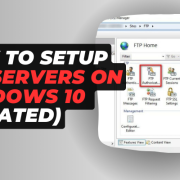Information comes in many different forms. And today we are encountering a lot of information wherever we go. In business especially, analysts and managers need to deal with a lot of information daily and make decisions for the future. When lots of various data come in unstructured or loosely structured formats, it is hard or even impossible to deal with it efficiently. That is where data parsing comes in. It is the process of giving structure to previously unstructured data, thus making it more available to extract meaning from.
The process of bringing order
Big data has brought a revolution in how business is done. Now, whenever a company is growing, so does the amount of data it has to deal with. And dealing with a lot of data usually means that often loads of unstructured information will be encountered. To make sense of this information, we have to bring order to it.
A software component known as a data parser does that by a two-step procedure. The first step is linguistic analysis, which is, generally speaking, the process of identifying and categorizing meaningful units of data. These units are called tokens, the process itself is sometimes referred to as tokenization. The irrelevant, meaningless tokens, such as white spaces are removed, and we are only left with those pieces of data that carry meaning.
The second step is called syntactic analysis, as it defines relationships between different types of data. It is done by arranging the tokens into a relational structure known as a parse tree. By displaying the relations between other data units, this structure makes it easier to read and understand both software and humans.
A third step may be added, called semantic analysis. But as this step refers to bringing out the meaning of the data, it is usually not included in the parser and left for processes more involving human guidance.
Use cases of data parsing
Thus, the general goal of data parsing is to make data more structured. Well-ordered data is easier to read and find meaning in. And only meaningful data can be beneficially utilized. Let us look closer at the uses of data parsing to improve data handling for rewarding results for the business.
1) Workflow optimization. Businesses deal with a lot of data as a matter of daily operations. When data is unstructured and hardly readable, naturally, it takes much more time to make use of it. By putting data into more accessible structures, data parsing makes it easier to utilize data necessary for business needs. This way, the workflow is optimized, and much less time is spent on the data handling processes. The time and effort saved can then be spent on bringing additional value to the company.
2) Investment intelligence. Data coming in raw, unordered and hardly readable form is as a present for investors as it is for businesses. The data must be analyzed and understood to use available information for market predictions and insights into investment opportunities. Data parsing is the first and crucial step towards this understanding. It speeds up the data analysis and makes the data more readily usable to extract valuable information, which may lead to profitable investments.
3) Unveiling various meanings. The same information, especially when there are loads of it, can be used in many different productive ways. Skilful manipulation and analysis of data may reveal more meaning in it than at first was expected. This leads to more ways to utilize the data for beneficial results. Such a variety of purpose and applications is more comfortable to see when the dataset’s structure is clear. A well-ordered facility makes the data more flexible for analysis, thus allowing the potential of data to emerge more clearly.
Cutting the gems
Data today is as valuable as natural resources extracted from the earth and oceans. And a time seems to be coming when it will be much more useful. This means that this is the time to learn how to cultivate the data for the gems lying within.
Data parser is one of the tools to do it. It takes a rough, uncut block of data and slices them to unveil the proper and precious forms, ready to be utilized. Of course, there are many other tools to be used on data to harness all its power truly. But parsing comes among the first, as it prepares the data for further analysis.
Like many other tools, a data parser can either be built by the company or acquired from those specializing in building such devices for data handling. Whichever path is taken, what matters most is that the highest quality of tools is used to uncover the enormous value of properly processed data.















Comments